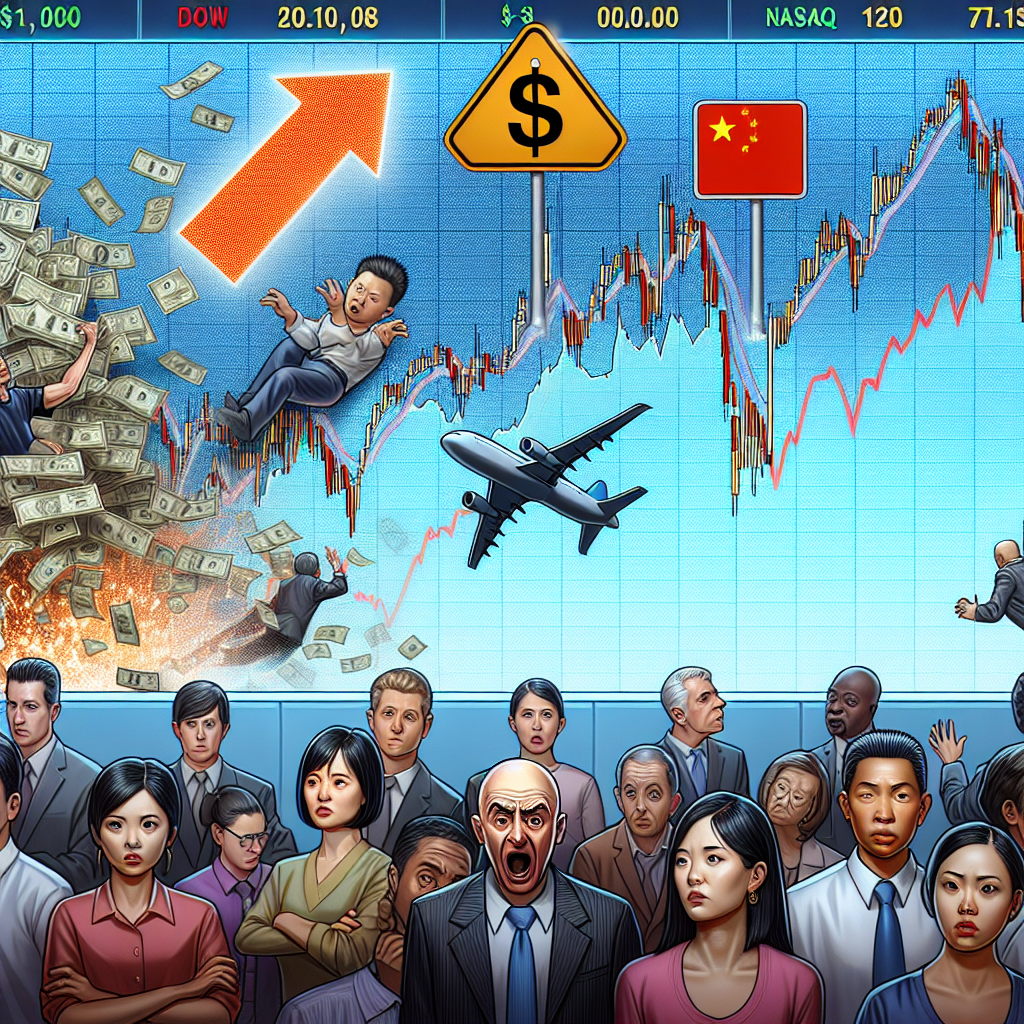Markets Plunge Amid Escalating U.S.-China Trade Tensions
In a dramatic turn of events that has roiled global financial markets, major U.S. stock indexes cratered after China announced its first round of retaliatory tariffs against the United States. The move came just hours after President Trump unveiled sweeping reciprocal tariffs aimed at curbing what he termed unfair trade practices by Beijing. As a result, U.S. stock futures nosedived, pointing to a volatile trading day ahead.
The Impact on Wall Street
Investors woke up to a stormy Monday morning. Futures tied to all three major stock indexes were in the red:
- Dow Jones Industrial Average: Futures dropped by over 500 points in pre-market trading.
- S&P 500: Declined by more than 2% as market nerves frayed over deepening global trade rifts.
- Nasdaq Composite: Tech-heavy index took a heavy blow, plunging nearly 2.5% amid fears of tighter trade restrictions on technology products.
The market downturn underscores investor anxiety over a prolonged trade war between the globe’s two largest economies and its potential to derail global economic growth.
China’s Retaliation Hits Multiple Sectors
In what experts describe as a calculated and proportional response, China’s Ministry of Commerce announced fresh tariffs on a slate of American goods, including agricultural products, automobiles, and industrial machinery. Economists warn that this tit-for-tat may target politically sensitive sectors—a strategy designed to pressure Washington back to the negotiating table.
The retaliatory measures by China sent ripples across multiple sectors:
- Agriculture stocks were among the worst-hit, reflecting fears of shrinking exports to one of the largest consumers of U.S. soybeans, corn, and pork.
- Automakers also came under fire as Beijing imposed higher tariffs on American-made vehicles, affecting giants like Ford and General Motors.
- Technology firms felt immediate pressure amid whispers of further regulatory scrutiny and export restrictions on critical components.
Trump’s Trade Strategy: Risk or Reward?
President Trump’s administration defended the tariff strategy, arguing that it aims to correct long-standing imbalances in the trade relationship with China and to protect American intellectual property. “These reciprocal tariffs are necessary,” Trump tweeted. “America has been taken advantage of for too long.”
However, critics argue that the measures could backfire by inflating costs for American consumers and businesses and by pushing key trading partners toward other global alliances.
Economic Indicators Flashing Yellow
Beyond the Dow, S&P 500, and Nasdaq, broader economic indicators are beginning to reflect the toll of these trade tensions. Several analysts now caution that continued escalation could prompt:
- Supply chain disruptions across industries reliant on Chinese manufacturing.
- Increased input costs that could stifle profit margins.
- Delayed investment decisions by companies uncertain of the long-term geopolitical landscape.
The 10-year Treasury yield also fell, reflecting a flight to safer assets and investor fears of a potential economic slowdown.
Global Markets React
Unsurprisingly, international stock markets also took a hit:
- European exchanges opened lower, following the sour tone set by Wall Street.
- Asian markets, particularly in China and South Korea, closed deeply in the red, as investors braced for economic turbulence.
- Commodity markets saw mixed reactions, with gold prices rising as a safe haven asset while crude oil fell on concerns over declining global demand.
What Comes Next?
With neither side showing signs of backing down, analysts expect heightened volatility in the days and weeks ahead. Calls for renegotiation and diplomatic intervention are growing louder from both Capitol Hill and Wall Street.
Market strategists advise investors to:
- Maintain diversified portfolios to hedge against disproportionate exposure to trade-sensitive industries.
- Stay engaged in the news cycle as developments unfold rapidly and materially impact investor confidence.
- Exercise patience and caution during periods of uncertainty and volatility.
Conclusion: Storm Clouds or Opportunity?
The latest chapter in the U.S.-China trade standoff has certainly rattled the markets, but it also serves as a critical inflection point. While short-term pain is evident, market watchers argue that long-term resolution and a more level playing field could ultimately benefit American businesses. For now, the world watches closely, taught once again that trade wars do indeed have casualties—and the stock market is often the first battleground.



Leave a Reply